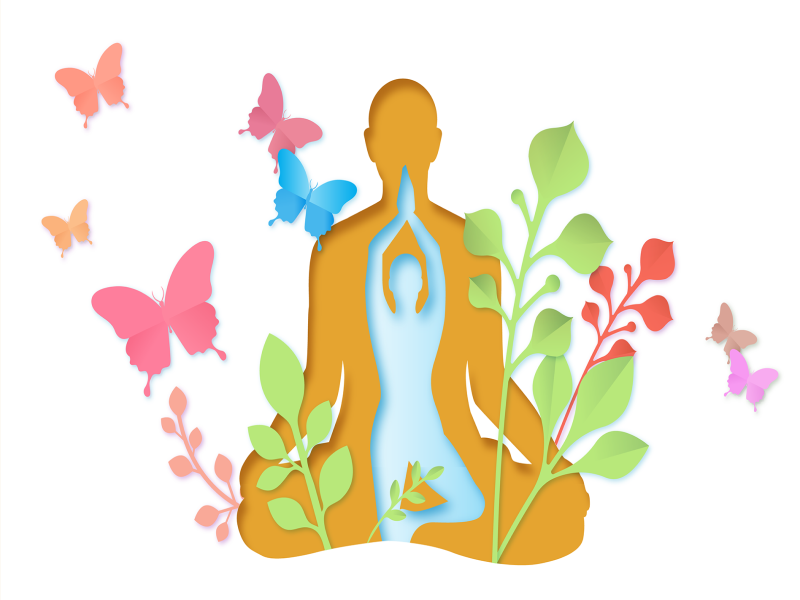Introduction
It is not easy to get some spare time to meditate and just let your mind and body get a break in the current world. Meditation or simply the cultivation of awareness as discussed early involves being fully aware of the present without forming an opinion about it is a tool used to create calmness, concentration, and contentment. Through the mindfulness toolkit, you can design mindfulness that best suits you because of the uniqueness that comes with self-impulsion to practice mindfulness fully.

Understanding Mindfulness
Mindfulness can be defined as an active, receptive, open attitude towards one’s present experience guiding and informing behavior without negative evaluation. It is the practice of making your mind to dwell on the present and cutting off negative thinking in the past or future.
Benefits of Mindfulness
Mindfulness has been shown to have numerous benefits for both mental and physical health, including:
- Reduced stress and anxiety: Mindfulness can help to reduce stress hormones and promote relaxation.
- Improved focus and concentration: Regular mindfulness practice can enhance your ability to focus and concentrate on tasks.
- Enhanced emotional regulation: Mindfulness can help you better manage your emotions and respond to challenges with greater resilience.
- Improved physical health: Mindfulness has been linked to various physical health benefits, such as lower blood pressure and reduced pain.
How Mindfulness Works
Mindfulness works by training your mind to become more present and aware. When you practice mindfulness, you learn to observe your thoughts and feelings without judgment, allowing you to let go of negative emotions and cultivate a sense of peace.
Assessing Your Needs and Goals
Before creating your mindfulness toolkit, it’s important to assess your unique needs and goals. Consider the following questions:
- What are your primary goals for practicing mindfulness? Are you looking to reduce stress, improve focus, or enhance your overall well-being?
- What are your biggest challenges or stressors? Understanding your unique challenges can help you tailor your mindfulness practice to address them effectively.
- How much time can you dedicate to mindfulness each day? Do not overestimate your time schedule and program, try to stick to what you can accomplish in given time.
Building Your Mindfulness Toolkit
Now that you know what areas of your life you’re going to focus on, it is time to create the toolkit of mindfulness practices. It remains important for you to note that this toolkit is made of various practices, tools and other relevant resources that can be adopted in the society.
Mindfulness Practices
As you prepare to engage in thinks like Formal Mindfulness Practice, remember this: There is no single ‘one size fits all’ way of doing it since there are many routes to taking this path. Some popular options include:
- Meditation: It is a process wherein an individual directs his or her thoughts on a single object, or practice like the breathing.
- Deep breathing: Pranayama or the ability to breath in and out properly can assist in calming the brain and the entire body.
- Yoga: While alternative medicine is almost as slippery to define as it is to practice, yoga refers to the physical exercise that involves performing certain body postures, controlling the breath and holding meditation.
- Mindful eating: Listening to your senses and the process of eating and consuming food is the key to practicing mindfulness.

The following is a list of Mindfulness Tools and Resources that are easy to access on the internet.
However, there are many suitable tools and sources that could be used in order to help you practice mindfulness successfully. These may include:
- Mindfulness apps: As previously mentioned, there are numerous apps available currently which provide the ability to download guided meditation, breathing instructions, and similar.
- Mindfulness books: It is, therefore, necessary for people to read books on mindfulness practice in order to gain useful information and advice.
- Online courses: With online classes, the students can get curriculum-based experience and can receive individual counseling.
Designing Own Mindfulness Practice
In order to integrate mindfulness into your life permanently, there is need to develop a routine. Consider the following tips:
- Start small: So, first, start with the five-ten minutes of mindfulness and then slowly the time can be increased.
- Find a quiet space: Pick a calm environment for your mindfulness practice so that you won’t be disturbed or interrupted.
- Be patient: In the beginning, mindfulness is relatively difficult and can be laborious at certain times; do not give up here and there.
The Reasons for Integrating Mindfulness into One’s Daily Practice
Mindfulness can be applied in many roles of your everyday existence. Here are some ideas:
Mindfulness in the Workplace
- Take short breaks: Interruption during the working process to perform certain exercises related to the present-mindedness, for example, breathing exercises.
- Mindful communication: Culture mindful communication; in other words, observe your thoughts and feelings and then communicate with eye intention.
Mindfulness at Home
- Mindful chores: They should practice the mindful way the moments in the day they spend doing chores such as dish washing and laundry.
- Mindful eating: Here I pay special attention to my senses and the presence to be mindful while eating.
Mindfulness in Relationships
- Mindful communication: Manage communication proactively by listening carefully and stating back what it was said.
- Mindful presence: With others, it means dedicate time to spend with them and be engaged in what is happening around you.
Challenges, which are inevitable in any form of research, were also encountered during this research; however the following section will; illustrate how the challenges were overcome and how consistency was maintained.
One must be reminded, however, that mindfulness practice can be difficult work at times. Here are some tips for overcoming challenges and maintaining consistency:
- Be patient: Something so instinctive since birth like paying attention is something that needs effort to be mastered. Do not lose heart in case you do not find the outcome of the activities in the initial phase itself.
- Find a support group: It is important to surround oneself with people who also are following the mindfulness routine.
- Set realistic goals: That is right, never push yourself to the extent of missing your targets by aiming high with your mindfulness practice, remember to always plan and set realistic goals and at the same time always be proud of a small achievement here and there.
- Find a mindfulness teacher or coach: People who offer formal instruction in mindfulness are teachers or coaches who can help and guide someone going through the mindfulness process.
Trying to achieve all of these tips and having the own set of instruments for practicing mindfulness can help a person create a calm, concentrated, and a fulfilling life.

Conclusion
Being aware or being mindful of the present happened to be strong pillars in enhancing one’s serenity, focus, and general health. This brings us to our topic of interest today – adding the personal touch to mindfulness by developing your very own mindfulness toolkit.
• Help to reduce distractions
• Improve self control
• Develop an attitude of well being ting calm, focus, and overall well-being.
By creating a personalized mindfulness toolkit, you can tailor your practice to your unique needs and goals, unlocking the full potential of mindfulness in your life.
The Power of Mindfulness
Mindfulness can have a profound impact on your life, helping you to:
- Reduce stress and anxiety
- Improve focus and concentration
- Enhance emotional regulation
- Improve physical health
- Cultivate a sense of peace and well-being
A Final Thought
As a last point, let me reiterate that mindfulness is a journey to be made not a targeted place to arrive at. It is therefore possible to realize the changes that mindfulness practicing brings in our day-to-day lives as we have looked at it. Thus, start working on it right now and create your own mindfulness toolbox that will be helpful for you.







